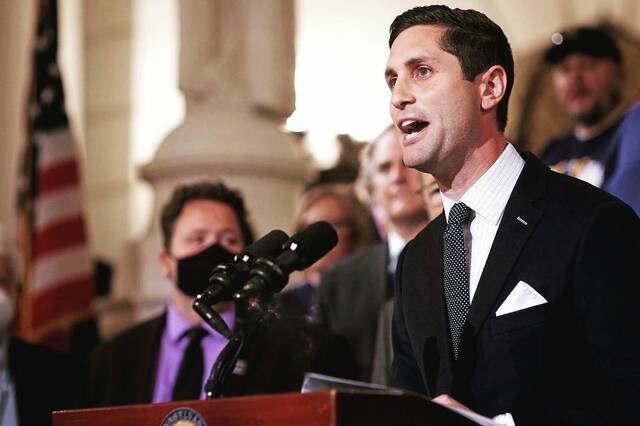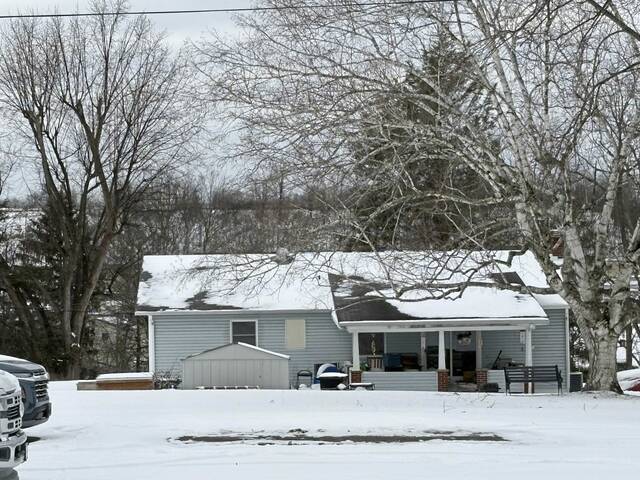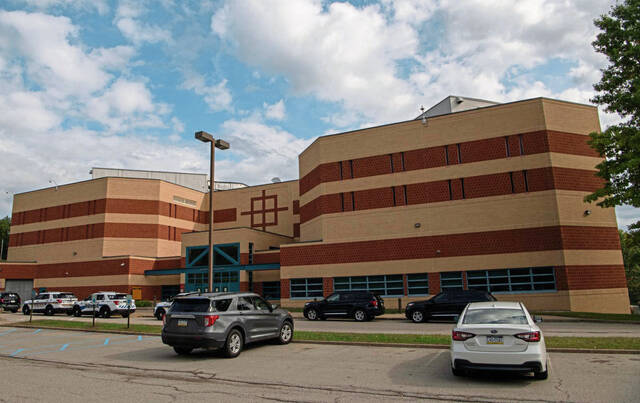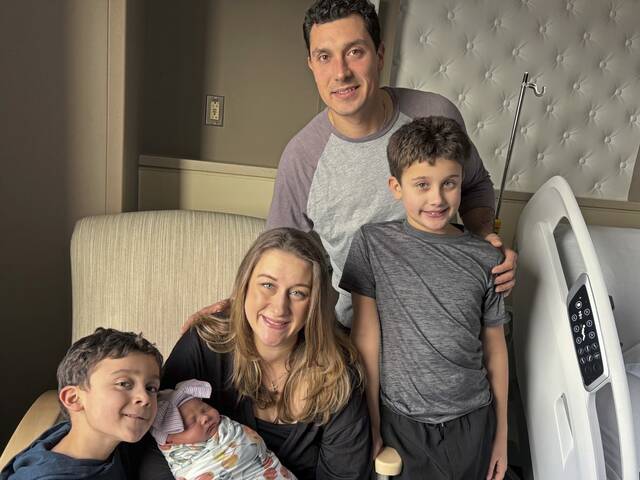Zach Shamberg fears federal Medicaid adjustments approved in President Donald Trump’s “One Big Beautiful Bill” will worsen a nursing home climate already strained by insufficient care reimbursements and staffing challenges.
Shamberg, president and CEO of the Pennsylvania Health Care Association, joined a chorus of health care experts speaking out against the changes. Medicaid is a state and federally funded health insurance program that supports low-income individuals and families, including pregnant women, people with disabilities and the elderly.
The Congressional Budget Office, a nonpartisan agency housed in the legislative branch, estimates the law could leave an additional 11.8 million Americans uninsured and reduce the Medicaid program by more than $1 trillion by 2034.
Shamberg predicted the legislation will tighten Pennsylvania’s budget and place nursing homes at risk of selling, merging or closing entirely.
“What we have learned certainly throughout the covid-19 pandemic,” he said, “is that if one part of the health care continuum falters, the entire system falters.
“And that’s what could take place here.”
Pennsylvania’s Medicaid program could lose more than $53 billion across the next decade, according to California-based health nonprofit KFF.
The Trump administration maintains that the 900-page legislation does not take funding away from qualified Medicaid recipients.
“As the president has said numerous times, there will be no cuts to Medicaid,” reads a statement posted June 29 on the White House press website. “The One Big Beautiful Bill protects and strengthens Medicaid for those who rely on it … while eliminating waste, fraud and abuse. The One Big Beautiful Bill removes illegal aliens, enforces work requirements and protects Medicaid for the truly vulnerable.”
From Shamberg’s view, it is more complicated.
“There is a real intention to eliminate waste, fraud and abuse,” he said. “That’s what Congress and the president aimed to do with the implementation of Medicaid work requirements and eligibility verification.
“But on the other hand, when we’re rolling back provider assessment dollars for hospitals that will both indirectly and directly affect nursing home residents and beneficiaries, then there is going to be a cut to Medicaid funding.”
Verification processes added
Signed by Trump on July 4, the act implements additional verification processes to ensure Medicaid is limited to those who qualify for it.
It also incorporates work requirements for Medicaid expansion recipients — those ages 19 to 64 whose annual income falls at or below 138% of the poverty level. For a family of four in 2025, this equates to about $44,400 per year, according to the Department of Health and Human Services.
The law will require Medicaid expansion recipients to work at least 80 hours a month, according to the Association of State and Territorial Health Officials. Exempt from that requirement are pregnant women, those with serious medical conditions, tribal members and parents or caregivers of a dependent child with a disability who is no older than 13.
The work requirements go into effect Dec. 31, 2026.
The legislation also will decrease the amount of money going into states’ Medicaid reimbursement systems for hospitals.
States can tax their hospitals’ net patient revenue up to 6% — a fee known as the provider assessment. The federal government matches that tax.
All the dollars are funneled into a reimbursement system that later pays hospitals for the care they administer to Medicaid patients. Pennsylvania hospitals annually pay about $1.5 billion combined through the provider assessment, according to the Hospital Healthsystem Association of Pennsylvania.
A similar system is in place for nursing homes, Shamberg said, noting that the federal match is 5.6%.
The “One Big Beautiful Bill” freezes the current federal match for county and privately owned nursing homes. But for hospitals, and in turn hospital-run nursing homes, the maximum federal reimbursement will be scaled down from 2028 to 2033 — reaching 3.5% by the end of the five-year period.
The rollbacks could reduce the Medicaid reimbursement pool for Pennsylvania’s hospitals by $4.5 billion over the next decade, according to the hospital association.
Potential impact
The provider assessment accounts for one-third of Medicaid reimbursements among Pennsylvania nursing homes, Shamberg said. Reducing hospitals’ rates could limit the pool of Medicaid dollars that states have to work with, he said.
The federal government contributes about 56% of the funding for Pennsylvania’s traditional Medicaid program, said Chase Cannon, executive director of the Pennsylvania Coalition of Affiliated Healthcare and Living Communities.
The state pitches in the remaining 44%, he said.
The federal government contributes the majority — about 90% — of funding to Pennsylvania’s Medicaid expansion program, Cannon said.
Seniors and people with disabilities account for a quarter of Medicaid enrollment, said Patrick Keenan, policy director for the Pennsylvania Health Access Network. But about 75% of Medicaid’s spending supports that population.
And the majority — nearly 65% — of nursing home residents rely on Medicaid to pay for their care, Keenan said.
“When we’re talking about taking billions of dollars away from our Medicaid program over the next 10 years,” he said, “there’s no way that nursing homes would not be impacted by that.”
Pennsylvania could raise taxes or divert funds from other priorities — such as road infrastructure and education — to make up for the reduction in federal Medicaid reimbursement contributions, Keenan said.
But Keenan fears it is more likely that Pennsylvania would cut services for seniors and people with disabilities and reduce Medicaid reimbursements to health care providers.
“That puts a lot of nursing homes that are really on the brink in very dangerous financial situations because they really count on every single Medicaid dollar to keep their facilities open, staffed and safe for all the residents that count on them,” he said.
Facilities also may be forced to increase the cost of care for Medicaid ineligible patients, Keenan said.
“What this means for a lot of Pennsylvania families,” he said, “is that they’re going to be saddled with large amounts of medical debt in the last years of their loved ones’ lives.”
Shamberg also predicts that the added work requirements to the Medicaid expansion program will lead to a spike in uninsured Pennsylvanians and increased state spending.
Arkansas in 2018 became the first state to establish a work requirement for Medicaid expansion recipients. Those 30 to 49 years old with an income below the federal poverty level — with some exceptions — were required to work 80 hours per month to keep their Medicaid benefits.
Within four months, more than 18,000 people unenrolled from the program, according to a study published on the National Library of Medicine website. A federal court ruling halted the policy nine months after its installation.
Implementing the policy cost Arkansas about $26.1 million, the study said.
Nursing homes strained
Medicaid does not fully reimburse nursing homes for the value of care they provide, Shamberg said. Pennsylvania, in particular, has the lowest Medicaid reimbursement rate among its neighbors — New Jersey, New York, Delaware, Ohio and West Virginia.
Pennsylvania’s Medicaid program reimburses nursing homes $256 per resident per day — a rate $60 lower than the actual cost of care, Shamberg said. Delaware and West Virginia pay more than $300 per resident per day, he said.
And as nursing homes nationwide struggle to hire enough workers, facilities typically are reduced to a 60% to 80% operating capacity, Cannon said.
Care requirements for patients are rising, further complicating the equation. The state in July 2023 increased the amount of time per day staff were required to dedicate to each patient, from 2.7 hours to nearly 2.9 hours. A year later, the state installed a second increase, landing at 3.2 hours per patient per day.
A federal law, which went into effect in June 2024, went beyond the state standard, setting a required 3.5 hours per patient per day.
Cannon suspects nursing homes’ decreased operating capacity might actually lessen the impact of federal Medicaid adjustments. The prediction, based on several assumptions, comes with a degree of uncertainty, he said.
It is widely accepted among the nursing home community that the number of Medicaid expansion recipients will decline after the work requirements go into effect at the end of 2026, Cannon said. Without insurance, patients may opt out of noncritical health care services, such as annual checkups and physicals.
Primary care hospitals, clinics and assisted living or personal care facilities might, in turn, reduce their staff to stay afloat financially amid the patient decrease, Cannon said. This could push more health care workers into the long-term care sector and allow nursing homes to operate at a higher capacity, he said.
But Cannon admits the prediction is a bit of a stretch.
Rural hospitals that have a higher percentage of Medicaid patients might be forced to close because of the adjustments in the “One Big, Beautiful Bill,” Cannon said. This could push patients to hospitals in neighboring counties and allow those facilities to maintain their current staffing levels — or even increase.
“Clearly, when you make assumptions like that, there’s certainly a degree of uncertainty,” he said. “It all now depends on what the state Legislature does with their budget.”
“My biggest fear,” Cannon continued, “is I think a lot of people are scared right now because of the uncertainty, and I just want to make sure that whatever we put out doesn’t contribute to people being more scared.”
In Keenan’s eyes, removing money from the Medicaid program is never a good sign.
“They’re doing this at a time when we have record shortages of health care providers,” he said, “and because of these cuts, we’re going to see even fewer health care providers in Pennsylvania.”











